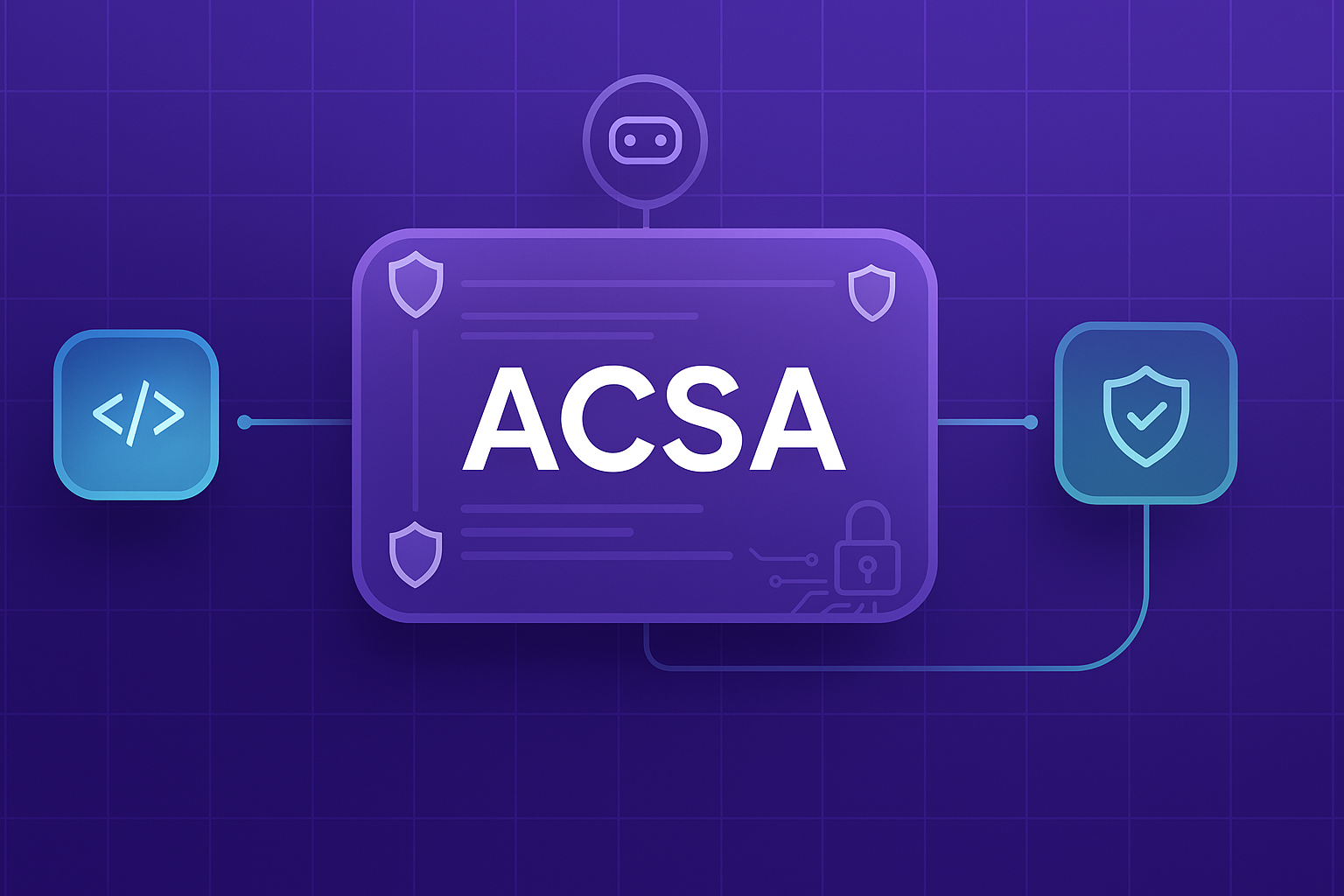
The New Reality: AI Is the Fastest Developer on Your Team
AI writes, refactors, and reviews code faster than any human developer. GitHub Copilot, Cursor, and Replit AI are embedded across enterprise IDEs, accelerating delivery cycles but also multiplying unseen risks. What once took weeks is completed in minutes, but security teams are discovering that machine-speed development demands machine-speed security.
Analysts have taken notice. In its recent feature spotlighting Checkmarx, Gartner introduced a new term, AI Code Security Assistance (ACSA), to describe the next evolution of secure software development. For CISOs and AppSec leaders, ACSA represents a decisive shift: from scanning for vulnerabilities after code is committed to assisting developers in real time as code is created.
Defining ACSA
AI Code Security Assistance (ACSA) refers to autonomous, context-aware agents that validate, remediate, and enforce security policies during the act of coding, not after the fact.
Unlike traditional static analysis or CI/CD-based scanning, ACSA systems live inside the IDE and integrate directly with AI code assistants. They interpret developer intent, apply organizational policies, and block insecure logic as the code is generated.
In other words, ACSA isn’t reactive; it’s preventative, adaptive, and continuous.
Why Enterprises Need It Now
- AI Has Redefined the Attack Surface
- Every AI completion can introduce insecure logic, outdated packages, or hard-coded secrets. Gartner research notes that more than 60% of GenAI code is reused without review, creating hidden vulnerabilities before AppSec ever sees the PR.
- Post-Commit Scanning Is Too Slow
The velocity of AI-assisted coding means thousands of lines can change before the next scan runs. Traditional tools flag issues after they’re merged — when remediation costs 10x more.
- Security Must Shift to the Cursor
ACSA brings AppSec to the point of creation, continuously validating code suggestions, imports, and dependencies within the IDE. This real-time feedback loop protects velocity and integrity, letting developers code confidently while staying compliant.
The Core Pillars of an ACSA Platform
- Real-Time, Intent-Aware Validation: Detects risky logic, unsafe API usage, or secrets the instant they appear, even in AI-generated code.
- Developer-Native Guidance: Surfaces contextual fixes inline, explaining why an issue matters rather than just blocking progress.
- Governance at Generation Time: Enforces security and compliance rules before code leaves the developer’s environment, preventing policy drift.
- Explainable AI Decisions: Every action taken by an agent, block, warn, or remediate, is auditable and human-readable for AppSec oversight.
- Ecosystem Integration: Works seamlessly across IDEs (VS Code, JetBrains, Cursor, Windsurf), CI/CD tools (GitHub, GitLab, Jenkins), and package managers (npm, Maven, PyPI), enabling consistent governance across toolchains.
The Checkmarx Approach: Turning ACSA into Reality
Checkmarx operationalizes ACSA through a three-agent architecture that bridges developer productivity and enterprise security:
- Developer Assist — Validates and remediates insecure logic in real time inside the IDE.
- Policy Assist — Governs agent behavior and applies role-based policies across teams, repos, and org tiers.
- Insights Assist — Correlates telemetry to deliver board-ready metrics on MTTR, SLA adherence, and exposure reduction.
Together, they create the industry’s most complete Agentic AI AppSec platform, unifying intent-aware validation, explainable AI, and ROI visibility, all operating at the speed of AI.
From AppSec to AppGenSec: The Convergence of Analyst Visions
Both Gartner’s ACSA and Forrester’s AppGenSec point to the same industry shift: AI is now a core contributor in the SDLC, and securing it requires context-driven assistance, not static gates.
Where AppGenSec defines the breadth of AI-enabled AppSec, ACSA defines the depth, the agentic layer that enforces policy at generation time.
Checkmarx sits at the intersection of both: combining AppGenSec’s adaptive intelligence with ACSA’s preventative enforcement.
The Future of Enterprise AppSec
In the next 12–18 months, security leaders will measure AppSec maturity not by scan volume but by how early and intelligently their systems prevent risk.
AI Code Security Assistance is the new baseline. Platforms like Checkmarx One Assist deliver the agentic enforcement and explainability required to safeguard code that humans and machines now write together.
The Future of AppSec in the Era of Agentic AI and ACSA
Forrester’s AppGenSec and Gartner’s AI Code Security Assistance (ACSA) describe two sides of the same evolution. Together they define a new discipline: AppGenSec powered by ACSA, where autonomous, intent-aware agents collaborate with developers to secure software at the point of creation.
Organizations that embrace this shift are already seeing developer throughput rise while vulnerability volumes drop. Agentic AI enables security that anticipates risk instead of reacting to it, ensuring every line of AI-generated and human code meets policy before it leaves the IDE.
- To explore how this transformation is reshaping enterprise software security, read our special report: The Future of AppSec in the Era of Agentic AI and ACSA, and for a deeper analyst perspective, download the Gartner Report on AI Code Security Assistance.
- Want to understand the developer perspective? Read next: The Productivity–Security Paradox of AI Coding Assistants.
- Visit Checkmarx.com or book a demo to see how agentic AppSec works in action.